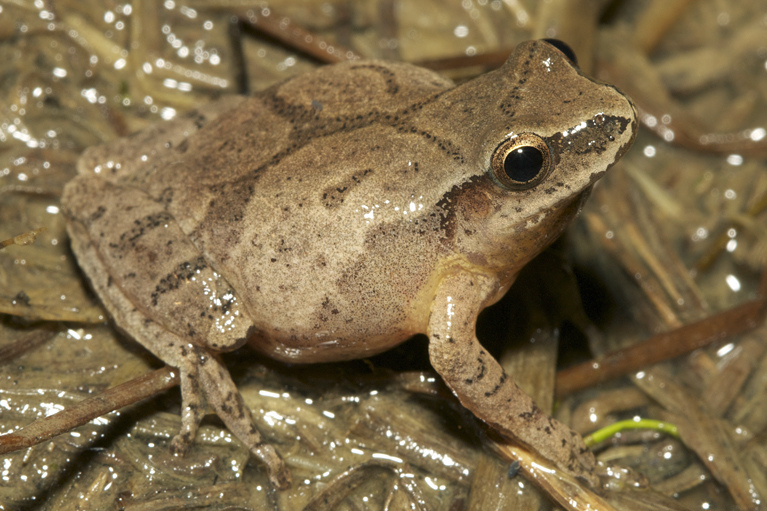Spring peepers (Pseudacris crucifer) are small tree frogs known for their distinct vocalizations during the spring mating season. Here are some additional details about spring peepers:
- Range: Spring peepers are found in various regions of North America. Their range extends from the southeastern United States to parts of Canada, and they are particularly common in the eastern United States.
- Call: The call of the male spring peeper is a loud and high-pitched “peep” sound, often likened to the sound of jingling sleigh bells. The calls are used by males to attract females for mating. The collective chorus of spring peepers can be quite loud and is a characteristic sound in wetland areas during the spring.
- Physical Characteristics: Besides the X-shaped pattern on their back, spring peepers have smooth skin, large toe pads, and a dark line that runs through their eyes. Their coloring can vary, but they generally have shades of brown or gray.
- Behavioral Adaptations: Spring peepers are adapted to a semi-arboreal lifestyle. They are often found in trees and shrubs near water bodies. Their toe pads allow them to climb vegetation and cling to surfaces, making it easier for them to move around in their habitat.
- Breeding Habits: Breeding typically takes place in the early spring, usually from March to June, depending on the region. Males call out from the edges of ponds, marshes, or other wetland areas to attract females. The females lay small clusters of eggs attached to vegetation in shallow water.
- Diet: Spring peepers primarily feed on small insects and invertebrates, contributing to the control of insect populations in their ecosystems.
- Survival: Spring peepers face threats from habitat loss, pollution, and disease. However, they are relatively adaptable and can inhabit a range of wetland environments, including temporary pools and woodland ponds.
- Lifecycle: The eggs hatch into tadpoles, which undergo metamorphosis to become adult frogs. The entire lifecycle, from egg to adult, can be completed in just a few months.
Spring peepers are an important part of the ecosystem, playing a role in controlling insect populations and serving as prey for various predators, including birds and snakes. Their distinctive calls mark the arrival of spring in many areas, making them a symbol of the changing seasons.
